Backstage with Matthew - Scaling the Sierra

I headed down to Burlingame last week to meet with two members of our production department who are deeply involved in this new production build: Steve McNally, our Scenic Artist in Charge, who oversees the painting and design side, and John Del Bono, our Workshop and Warehouse Foreman, who oversees the carpentry and properties side. John has been with the Opera since 1999 and spent 18 years working in the properties department under Lori Harrison, becoming Assistant Master of Properties, before moving to his current role. Steve has been with the Opera for four years but has been a scenic artist for some 35 years in the Bay Area working in motion picture, television, theater and industrial areas.
Walking into the workshop you immediately come upon the production’s floor—a swirl of earth-tones painted to resemble an oil spill but also strikingly similar to a topographical map. It is a work in progress with additional detail, areas of gloss, and flecks of gold dust still to be added, giving depth, intensity and energy. Steve and his team are working from a marbled paper design by David Gropman, over which he lays a transparent grid, marked in feet. Steve works out techniques in miniature, coming up with the right balance of detail and scale to ensure audiences can perceive the designs from a hundred feet away. Little tent markers dot the floor and the scenic artists create a 50-foot version, ready to be transported to the stage of the War Memorial. You can watch a great timelapse of the floor painting.
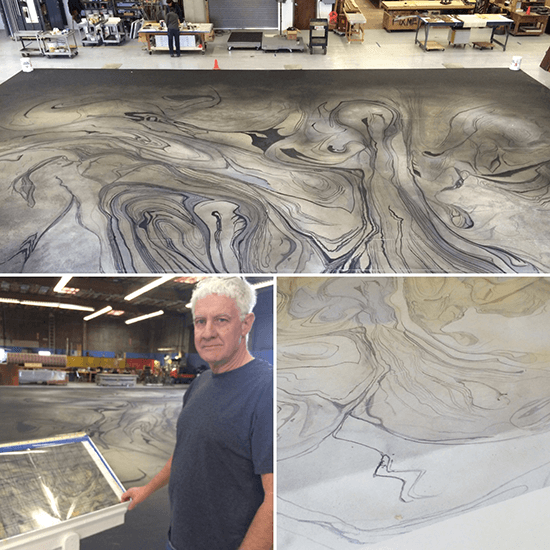
Bottom right: A smaller sketch as ideas are tested out.
Elsewhere in the shop, work is far along on an intriguing mechanism that director Peter Sellars and designer David Gropman use in the first scene of the opera—an authentic 19th-century theatrical effect in which a reinforced canvas travels around two large drums to give the illusion of movement. The canvas will be sent out to be printed, but the drums are being prepared and the machinery is being fabricated in-house. Wood finishes will be added to give a more authentic 19th-century feel, including to the hand-cranks which will be manually operated by stage crew. The engineering behind this single piece is formidable and John and his team are utilizing sailing techniques from high-end racing boats to track the canvas smoothly around the mechanism.
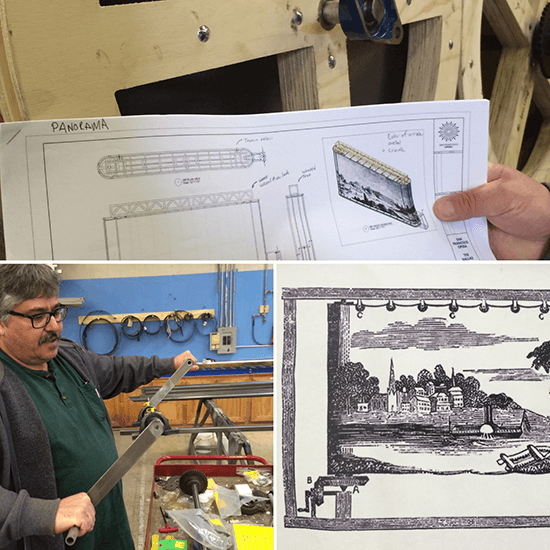
Bottom left: John Del Bono demonstrates the shop-engineered and built handle.
Bottom right: An example of the historic device that inspired this set piece.
Elsewhere paint finishes are being tested for the stylized 42-foot-high redwood trees which will track on and off stage throughout the opera. The team is moving towards a burnished, metallic feel, replete with a sense of age and distress, created by layers of glue and mud. And then a prototype wagon is being built based on authentic Gold Rush designs. It’s at an early stage of process and doesn’t have wheels yet—those will come from a historic wheel vendor in Kentucky.
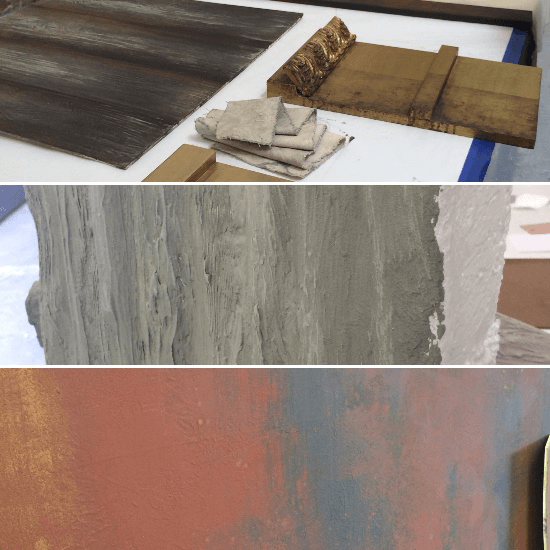
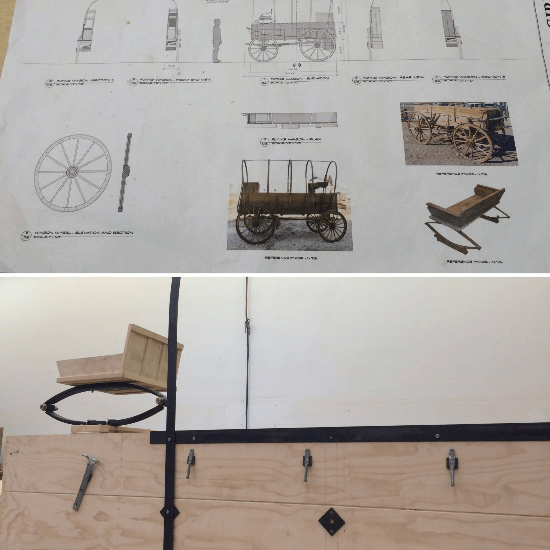
Maybe the most intriguing aspect coming to life is the tree-stump that will define the Act II scenery: an iconic 300-ft tall, 1,244-year-old tree in what is now Calaveras State Park that was shamefully felled in 1853. The tree and its 24-foot stump remain on display to the public to this day, after serving as a dance floor and as a symbol of the environmental movement by John Muir. John Del Bono showed me platforms which will form the base of the stump, along with spacer boxes which will give it height. Eventually foam will be added to the exterior which will be cut with hot wire into a rough shape before being sculpted with wire brushes and knives. It will finally be coated with a finish, currently being experimented on in the workshop.
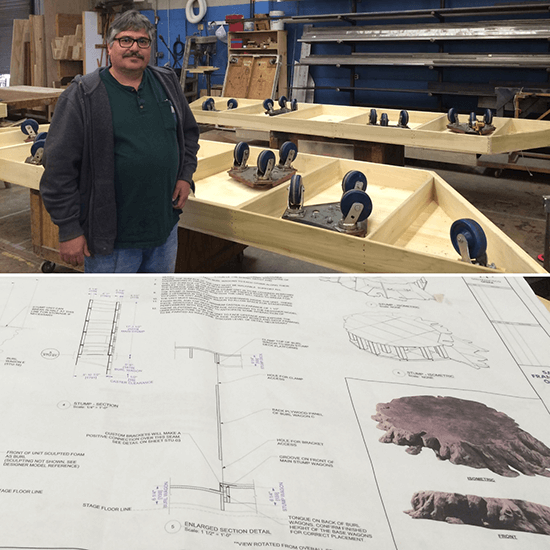
John Del Bono with the early-stage elements of the Calaveras tree stump, with designs for the stump below.
The extent of techniques and approaches being incorporated as this thrilling new opera comes to life is fascinating: historic and contemporary engineering and artistry fusing into what will be a magnificent set in November. I’m excited to see the rest take shape as John, Steve and their teams work through the next six weeks.

